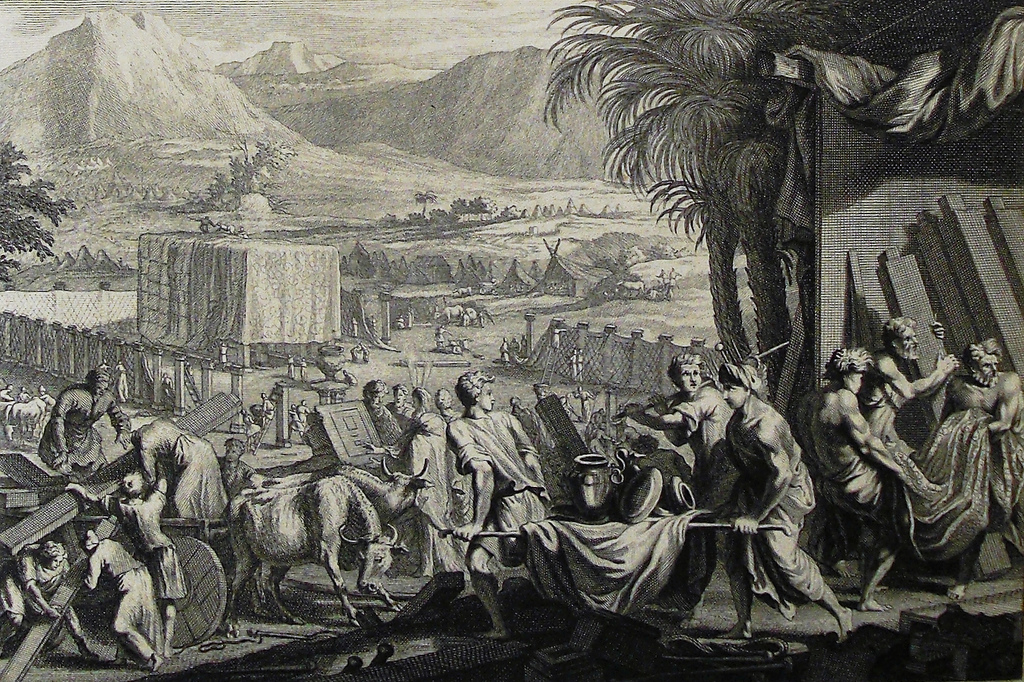While there may not be explicit worship instructions in the New Testament, the Scriptures are not completely void of direction when it comes to New Covenant worship. Instead of a new set of laws to regulate worship, the Scriptures include illustrative images and shadowy pictures that speak of the New Covenant and our relational worship of God. Strangely enough, these pictures of our current worship experiences are not found in the New Testament, but reside in the official worship spaces of the First Covenant.
(Speaking of the Old Testament Priesthood) They serve at a sanctuary that is a copy and shadow of what is in heaven. This is why Moses was warned when he was about to build the tabernacle: “See to it that you make everything according to the pattern shown you on the mountain.” – Hebrews 8:5
In constructing the first structure for the corporate worship of Yahweh, Moses lays out a crass, but faithful replica of what is in Heaven. This idea is repeated throughout the prophets, as we read about their glimpses into heavenly places and hear about elements in heaven that are reflected in the first worship system in the desert. Moses may or may not have known, but he was carrying around with him a temporal model of certain heavenly realities.
It was necessary, then, for the copies of the heavenly things to be purified with these sacrifices, but the heavenly things themselves with better sacrifices than these. For Christ did not enter a man-made sanctuary that was only a copy of the true one; he entered heaven itself, now to appear for us in God’s presence. – Hebrews 9:23-24
The law is only a shadow of the good things that are coming– not the realities themselves. For this reason it can never, by the same sacrifices repeated endlessly year after year, make perfect those who draw near to worship. – Hebrews 10:1
It is clear from Paul and the writer of the book of Hebrews that the Temple/Tabernacle system of worship is no longer necessary. The destruction of the Temple in Jerusalem, in 70 AD, further emphasized this point. We no longer need to offer animals or produce in order to cleanse ourselves from sin. Jesus has done this for us once and for all (see Hebrews 10)! If this is true, of what good are those parts of Scripture that layout the older system of sacrifice and worship? As mentioned previously, these earlier structures and systems provide pictures of heavenly realities that seem to be eternal and not bound to any particular covenant. As we look for biblical guidance on how to grow as worshiping communities, it would benefit us to explore the Tabernacle of the Old Testament, in order that we might be greater informed of what we experience, as we boldly approach the throne of grace in our New Testament, Christian worship experiences.
The Tabernacle has been explored throughout Christian history, but many Christians today have never really paid it much attention. I believe this is probably for three main reasons. One, the biblical material describing the Tabernacle is technical, unfamiliar, and, on first glimpse, pretty boring. As well, this part of the Old Testament has been historically interpreted using typology. Typology is a form of biblical interpretation that finds meaning in the Old Testament by seeing people, objects, and events as symbols or illustrations of New Testament ideas. The New Testament itself interprets the Old in this way on numerous occasions. Even so, this sort of reading of the Old Testament tends to be difficult for modern Christians who have been trained to find empirical answers in the Scriptures using observation and reason, as opposed to typology that tends to rely more on imagination and inspiration. Lastly, the tabernacle has been difficult for Christian scholars to interact with, because most of the academic conversation about this topic has been overwhelmed with discussions about historicity (did the tabernacle actually exist). These heated debates have been going on for over a hundred years now, and have drowned out almost all other discussions on the topic.
While there are a few groups in the Body of Christ that are exploring these ideas today, studies of the Tabernacle are usually seen by the larger body as esoteric, biblical curiosities, not really essential to practical faith. During this time of transition and flexibility in the worship cultures of much of the Church, it is essential to explore all that the Scriptures are sharing with us on this topic to make full, theological, biblical decisions on how to creatively and faithfully grow in our worship theology and practice. Understanding the pictures that the tabernacle provides is part of the puzzle. Its arrangement and the similar arrangement of the temple were quite familiar to all of the biblical authors, and this framework would have under-girded their conversations about worship, prayer, and a number of other important issues.
In the next few posts, we will explore the tabernacle and search together for elements that can inform our corporate experiences in worship. In addition, we will be examining our own lives. We will be inviting God to change and grow us, as we learn about these pictures and copies of heavenly realities. May the Holy Spirit, the true teacher, be at work in us as we walk through the Tabernacle in the Desert together!
